“SUBARU New Management Policy” Update (May 13, 2024)
Key Points of the Update
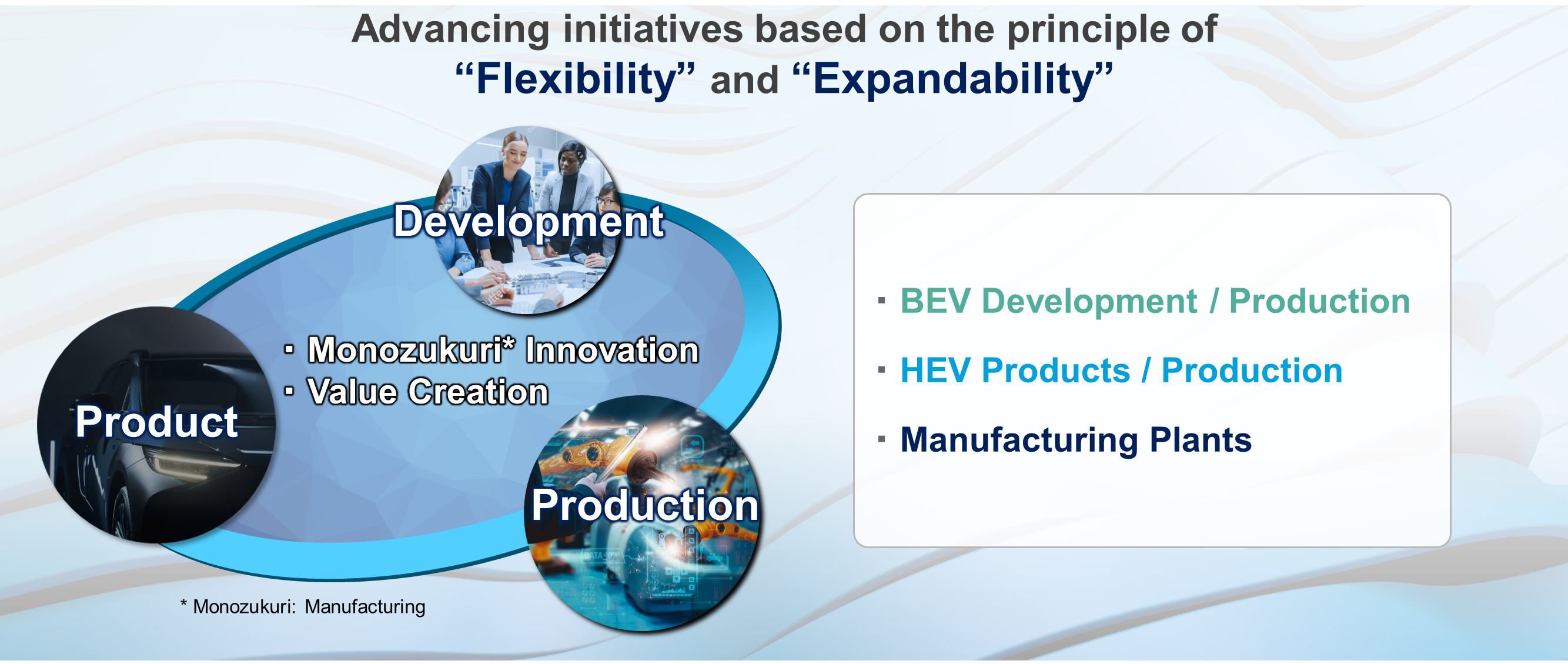
In August 2023, Subaru Corporation announced the “SUBARU New Management Policy.” Subaru is making various efforts based on the principle of "flexibility and expansion," which we consider to be of great importance in a phase where it is difficult to clearly predict the future. Under this principle, we are taking initiatives aimed at responding flexibly to regulatory and market trends while closely monitoring them, and at the same time preparing for rapid expansion when the direction becomes clearer.
While we expect BEVs to play a central role in achieving carbon neutrality from a medium- to long-term perspective, in this update present our initiatives in the areas of "development," "products," and "production" for the period from 2025 to 2026, the early phase of the BEV transition, in terms of our "flexibility" in responding to the changing business environment.
BEV Development / Production (BEV lineup by the end of 2026)
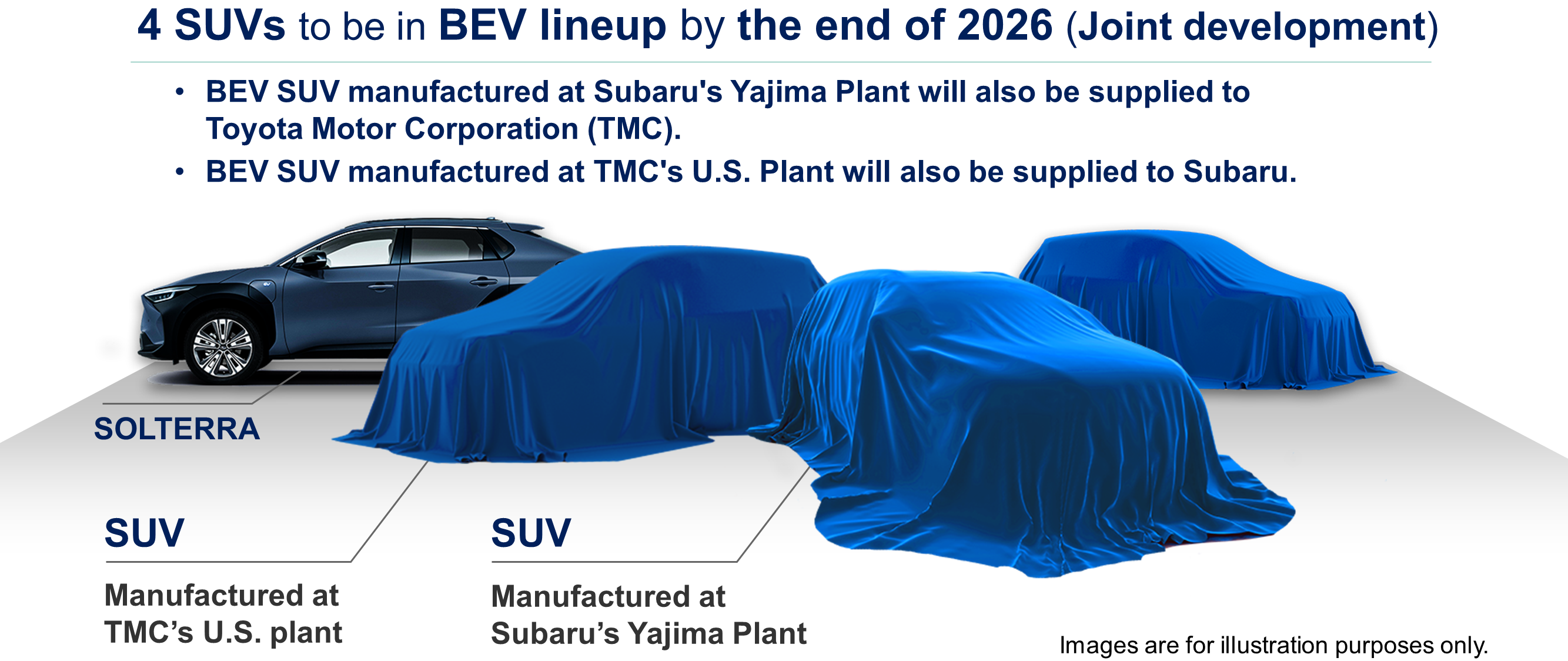
We have explored various options for the development of BEVs, including in-house development and alliance cooperation, but for the four BEV SUVs planned for our lineup by the end of 2026, we are developing them jointly with Toyota Motor Corporation (TMC), leveraging the knowledge and expertise of both companies.
The jointly developed BEV SUV, which will be manufactured at Subaru's Yajima Plant, will also be supplied to TMC. On the other hand, the BEV SUV to be manufactured at TMC's U.S. plant will also be supplied to Subaru, meaning that Subaru will have a U.S.-manufactured BEV in our lineup.
Through this approach of joint development, joint production and joint supply, we will ensure flexibility in the areas of development and production while mitigating risks with TMC at a time when it is difficult to clearly predict future trends.
HEV Products / Production
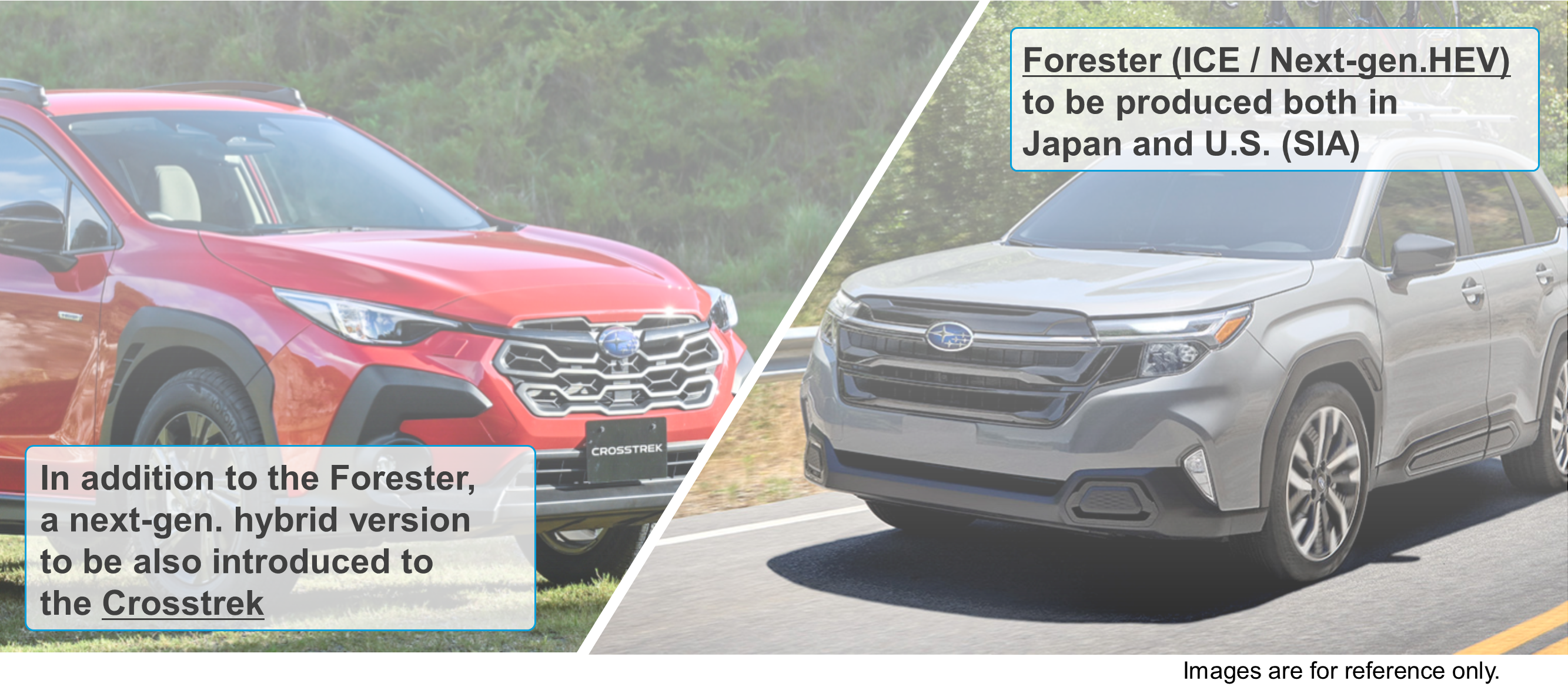
As previously announced, we will introduce a next-generation hybrid version of the Forester based on Toyota Hybrid System (THS), which will be a Subaru distinctive HEV featuring the horizontally-opposed engine; in addition, the next-generation hybrid will be extended to the Crosstrek.
By strengthening our hybrid lineup, we will ensure flexibility in our product offerings and provide more choices for our customers.
The new Forester, both gasoline and hybrid models, will be produced not only in Japan but also later at SIA in the U.S., increasing production flexibility by ensuring capabilities in both countries.
Manufacturing Plants
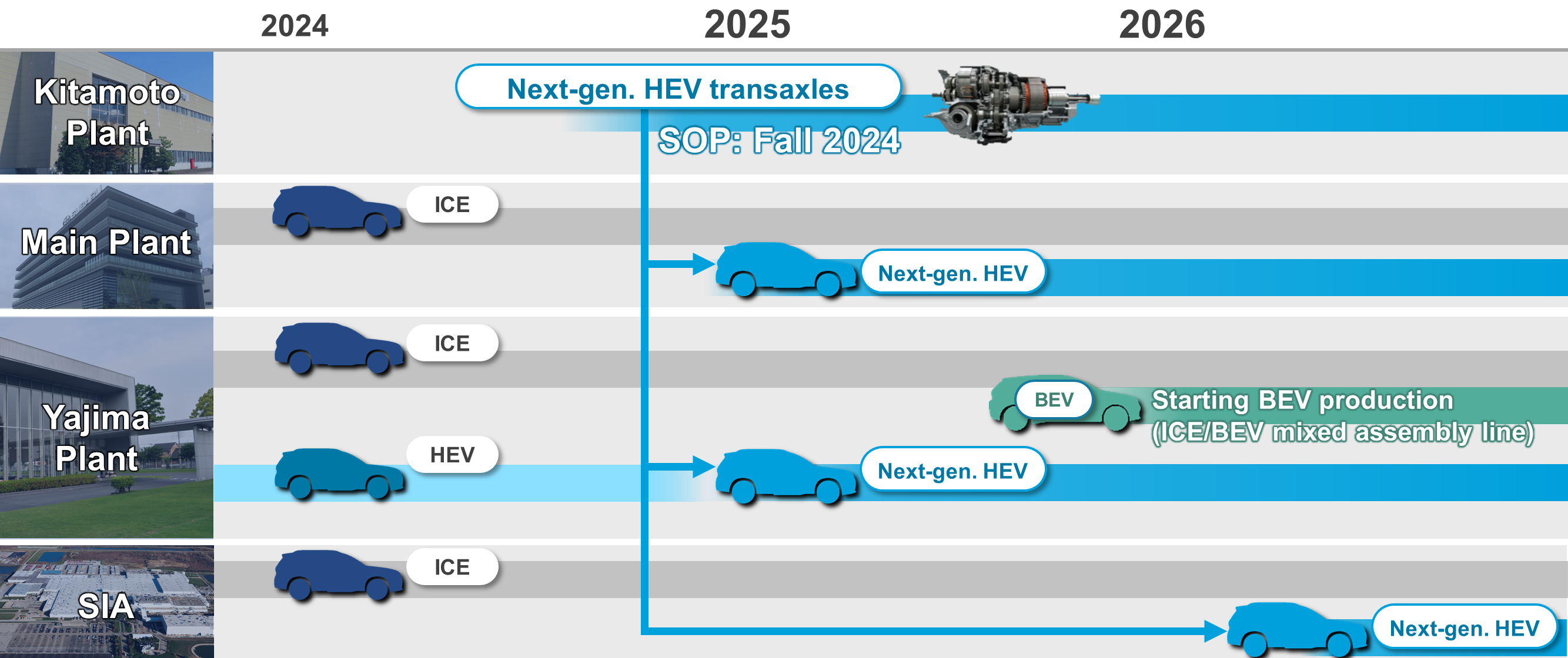
In the fall of 2024, production of transaxles, a core component of the next-generation HEV power unit, will begin at the renovated Kitamoto Plant.
Our next-generation HEVs will be produced not only in Japan, but also later at SIA in the U.S., ensuring flexibility in HEV production with capabilities in both countries.
Also at the Yajima Plant, we will maintain production flexibility to respond to changes in demand by launching a mixed assembly line for gasoline vehicles and BEVs, while also supplying BEVs produced there to TMC.
Going Forward
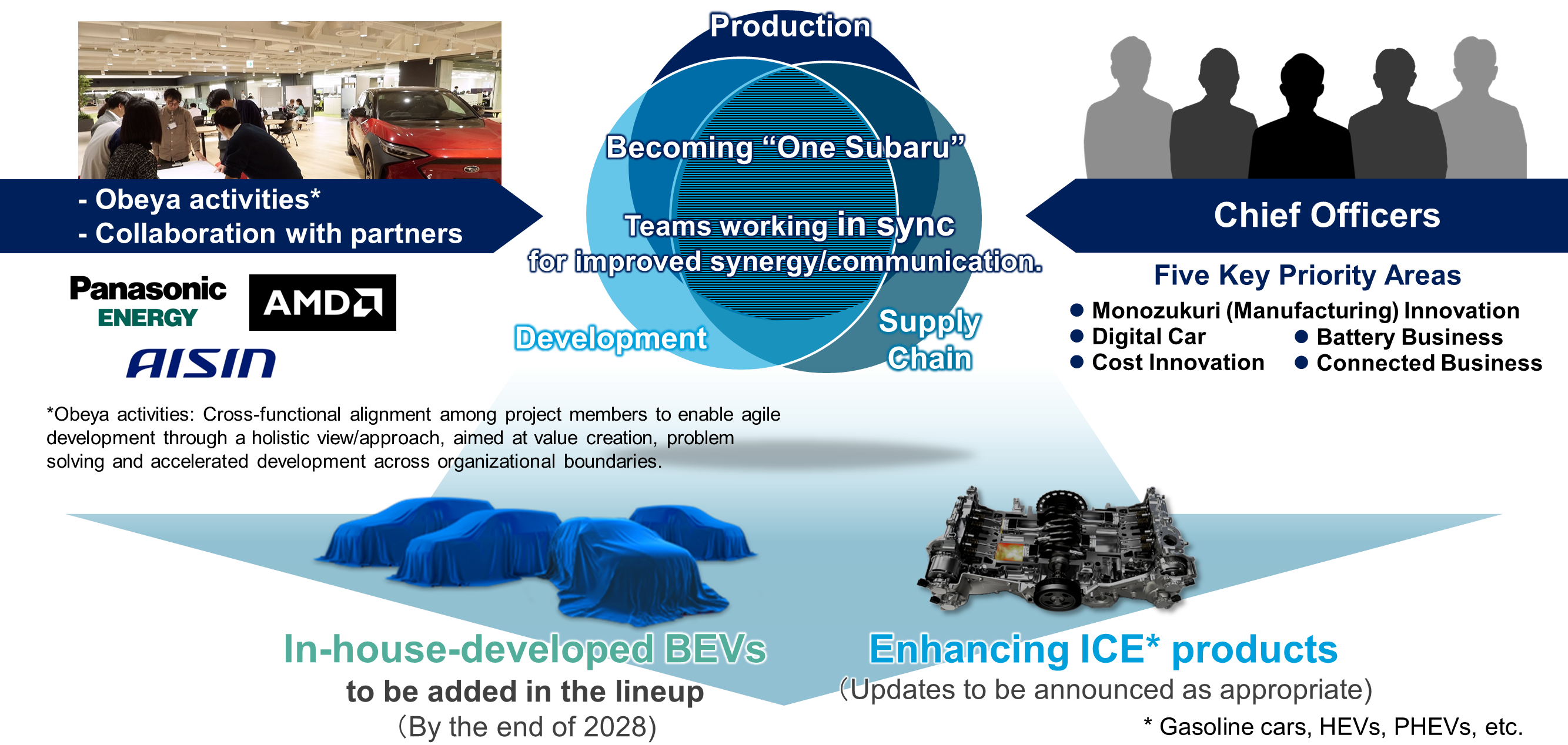
For the 2025-2026 period, the early phase of the BEV transition, we will ensure “flexibility” to respond to changes in the business environment through various initiatives in the areas of “development,” “products,” and “production.”
Looking ahead to the subsequent phase of widespread BEV adoption, the "expansion" phase, the achievements of the "Monozukuri Innovation" and "Value Creation" initiatives will be crucial.
At the Innovation Hub, which opened in January 2024, we are advancing efforts to achieve "Monozukuri Innovation" and "Value Creation" through "Obeya" activities, where our employees and business partners gather without boundaries to discuss development, production, and other matters, while cultivating partnerships and collaborations with outside companies.
In February 2024, Subaru appointed Chief Officers for five key priority areas: Monozukuri (Manufacturing) Innovation, Battery Business, Digital Car, Connected Business, and Cost Innovation. Under their leadership, we are accelerating Monozukuri Innovation and Value Creation initiatives by crossing boundaries, breaking down walls, and transforming organizations.
Through these efforts, we will strive to achieve “Becoming One Subaru,” where development, manufacturing, and the supply chain work “in sync,” and as “One Subaru,” we aim to develop the BEVs to be added to our lineup by the end of 2028 in-house, leveraging alliance expertise. We will also apply the knowledge and expertise acquired from our Monozukuri Innovation and Value Creation initiatives to enhance our ICE products.
Moving forward, we will provide updates on our efforts to enhance ICE products, as well as the specific progress of our Monozukuri Innovation and Value Creation initiatives.
Related News Release
Subaru and AMD Collaborate on SoC Design to Integrate Stereo Camera and AI Inference for the Next-Generation EyeSight
Subaru and Panasonic Energy Agree to Cooperate in Supply of Cylindrical Automotive Lithium-ion Batteries
SUBARU and AISIN to Collaborate on eAxles for Next-Generation Electrified Vehicles
Subaru Corporation Announces Organizational and Management Changes (Effective March 31, 2024 and April 1, 2024)
Subaru Corporation Announces Organizational Changes and Change in Executive Officer's Area of Responsibility (Effective January 1, 2024)
Subaru to Adopt North American Charging Standard (NACS) for its Battery Electric Vehicles (BEVs) in North America
